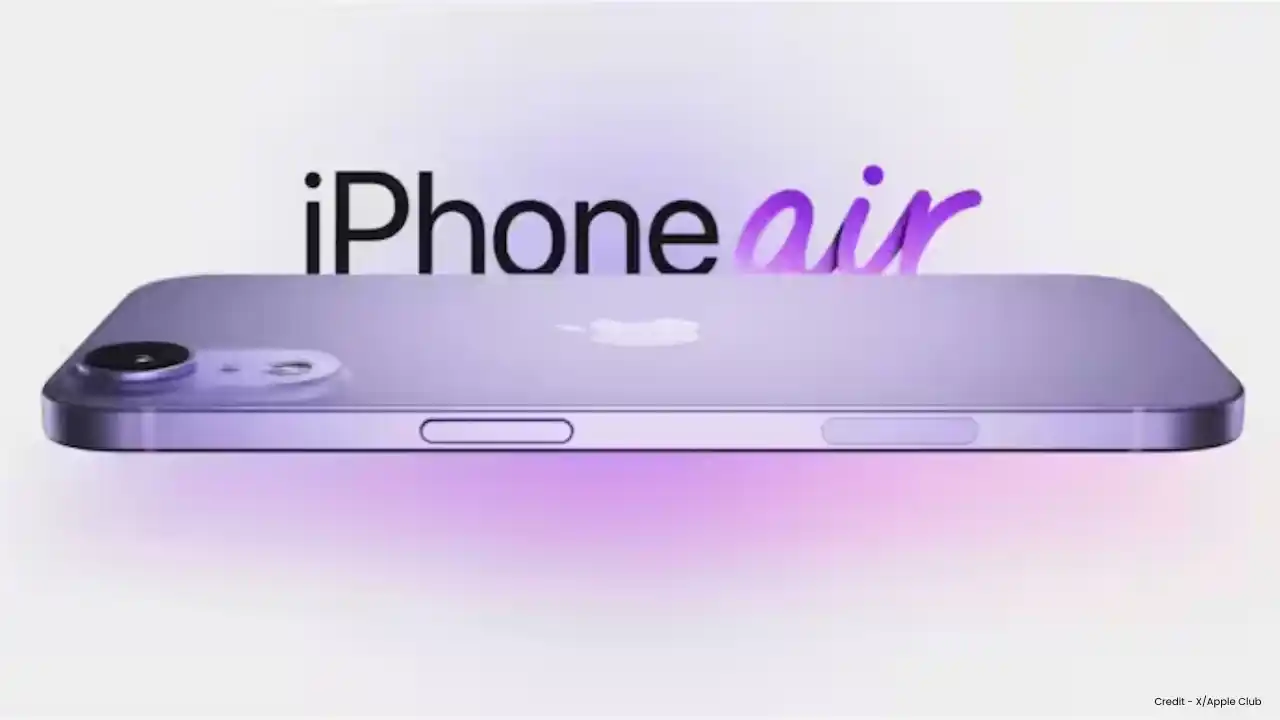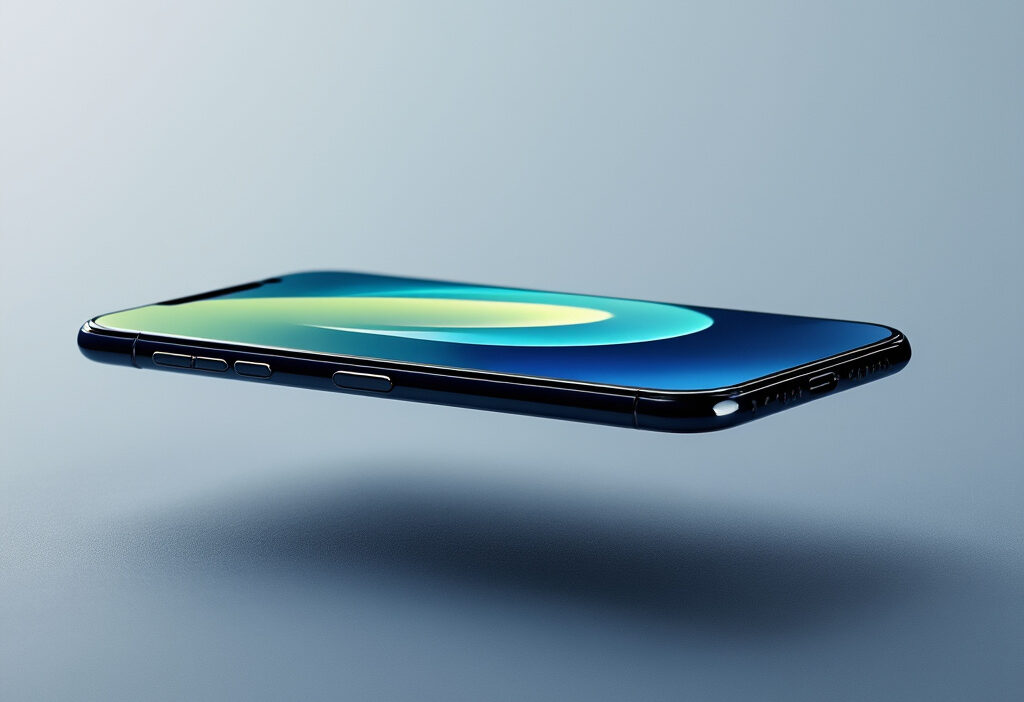iPhone 17 Air: All the Buzz About Apple’s Ultra-Slim Flagship
Apple’s anticipated iPhone 17 Air is poised to redefine smartphone elegance with its ultra-slim design. Expected to launch in 2025, this device represents a significant leap forward in Apple’s design philosophy, embracing both aesthetic appeal and technological advancement. The iPhone 17 Air’s remarkable thinness, alongside its cutting-edge features, promises to captivate tech enthusiasts and casual consumers alike.
The Evolution of Apple’s iPhone: A Journey to Slimmer Designs
Since the debut of the original iPhone in 2007, Apple has relentlessly pursued thinner, sleeker designs without compromising performance. The journey from the 11.6mm-thick first-generation iPhone to the rumored 6mm iPhone 17 Air is a testament to Apple’s obsession with minimalist engineering. Each iteration introduced breakthroughs—like the unibody aluminum chassis of the iPhone 5, the edge-to-edge display of the iPhone X, and the Ceramic Shield front cover of the iPhone 12—pushing the boundaries of what a smartphone could be.
The shift toward slimmer designs wasn’t just aesthetic; it was a technical revolution. Apple’s Industrial Design Group, under Jony Ive’s leadership, prioritized material science and component integration, leading to innovations such as stacked logic boards, thinner OLED panels, and custom silicon like the A-series chips. The iPhone 6’s 6.9mm profile was a milestone, but it came with compromises—bending issues and battery limitations. Later models, like the iPhone 13 and 14, refined this approach by using advanced alloys and more efficient thermal designs.
The iPhone 17 Air represents the pinnacle of this evolution, leveraging breakthroughs like Touch and Display Driver Integration (TDDI) to merge touch sensors and display circuitry, saving crucial millimeters. Apple’s use of graphene-based cooling and a redesigned battery architecture ensures that thinness doesn’t sacrifice battery life or thermal performance. This relentless pursuit of slimness reflects Apple’s philosophy: simplicity is the ultimate sophistication. The iPhone 17 Air isn’t just thinner—it’s a culmination of 17 years of innovation, proving that form and function can coexist in an ultra-slim flagship.
Unveiling the iPhone 17 Air: Design and Physical Characteristics
The iPhone 17 Air represents a bold leap in Apple’s pursuit of ultra-slim design, with rumors pointing to a jaw-dropping 6mm thickness—making it the thinnest iPhone ever. Achieving this required overcoming significant engineering hurdles, particularly in balancing structural integrity with cutting-edge functionality. Apple’s solution lies in Touch and Display Driver Integration (TDDI), a breakthrough that merges touch sensors and display drivers into a single chip. This not only reduces the device’s internal footprint but also enhances touch responsiveness while conserving power.
The chassis is crafted from a reinforced titanium-aluminum alloy, offering durability without adding bulk. Apple’s engineers also reimagined the internal layout, stacking components vertically and using flexible printed circuit boards (FPCBs) to maximize space efficiency. The camera system, often a thickness bottleneck, now features a periscope lens design, allowing for superior zoom capabilities without protruding.
Compared to its predecessors, the iPhone 17 Air shaves off nearly 1.5mm from the iPhone 15’s 7.4mm frame, a feat that underscores Apple’s relentless innovation. Competitors like Samsung’s Galaxy S24 Ultra (8.1mm) and Google’s Pixel 9 Pro (8.3mm) now appear bulky by comparison. However, this slimness comes with trade-offs. Battery capacity, for instance, is rumored to be slightly reduced, though Apple counters this with more efficient power management via the A19 chip and optimized software.
The iPhone 17 Air’s design isn’t just about aesthetics—it’s a testament to Apple’s ability to push boundaries while maintaining functionality. As we transition to discussing its performance, it’s clear that this device is more than just thin; it’s a carefully engineered marvel.
The Heart of the iPhone 17 Air: Performance and Technology
The iPhone 17 Air’s ultra-thin design is more than just an aesthetic marvel—it’s a powerhouse of cutting-edge technology. At its core lies the rumored A19 chipset, Apple’s next-generation silicon built on an advanced 3nm+ process. This chip promises unprecedented efficiency and performance, balancing raw power with thermal management—a critical challenge given the device’s 6mm frame. Early benchmarks suggest a 20% CPU uplift and 30% GPU improvement over the A18, making it a game-changer for intensive tasks like AI-driven photography and augmented reality.
The display leverages OLED technology with ProMotion, dynamically scaling from 1Hz to 120Hz for buttery-smooth visuals while conserving battery. This adaptive refresh rate is particularly impactful for the iPhone 17 Air, as Apple reportedly uses a new low-power LTPO backplane to minimize energy drain. However, squeezing such advanced display tech into a slimmer chassis required innovations like stacked battery architecture and redesigned cooling solutions to prevent throttling under sustained loads.
For developers, the A19 and ProMotion combo opens doors. Apps can harness the chip’s neural engine for real-time machine learning, while ProMotion’s fluidity demands optimized animations and interactions. Yet, the thin form factor poses constraints—thermal headroom is limited, pushing developers to prioritize efficiency over brute-force performance. Consumers, meanwhile, gain a device that marries portability with flagship-tier speed, though heavy users may need to temper expectations for prolonged, high-intensity workloads.
The iPhone 17 Air’s technical choices reflect Apple’s relentless push for miniaturization without compromise, setting a new standard for what’s possible in ultra-slim smartphones.
Revolutionizing Display and Interaction: From OLED to ProMotion
The iPhone 17 Air’s display is a marvel of engineering, leveraging OLED and ProMotion technologies to deliver an unparalleled visual experience. OLED, or Organic Light-Emitting Diode, eliminates the need for a backlight by allowing each pixel to emit its own light. This results in deeper blacks, vibrant colors, and superior contrast ratios compared to traditional LCDs. Apple’s refinement of OLED ensures energy efficiency, crucial for maintaining battery life in the ultra-thin iPhone 17 Air.
ProMotion, Apple’s adaptive refresh rate technology, dynamically adjusts from 1Hz to 120Hz based on content. Scrolling through social media or playing high-frame-rate games feels buttery smooth, while static content like reading an eBook drops to lower refresh rates to conserve power. The integration of LTPO (Low-Temperature Polycrystalline Oxide) backplane technology enables these rapid transitions without lag, ensuring seamless interaction.
The implications of ProMotion extend beyond aesthetics. A higher refresh rate reduces perceived latency, making touch input feel instantaneous—a critical advantage for productivity and gaming. However, balancing this with battery life is a challenge. Apple’s A19 chipset, discussed in the previous chapter, plays a pivotal role here, optimizing power delivery to the display without compromising performance.
For developers, ProMotion opens new possibilities. Apps can now leverage smoother animations and real-time responsiveness, but they must also adapt to variable refresh rates to avoid unnecessary power drain. The iPhone 17 Air’s display isn’t just about looking good—it’s about redefining how users interact with their devices, setting a new standard for ultra-thin flagships.
As we transition to the next chapter, the focus shifts to another critical aspect of the iPhone 17 Air: its camera system, where Apple’s design choices continue to push boundaries while adapting to the constraints of an ultra-slim form factor.
Behind the Lens: The iPhone 17 Air’s Camera System
The iPhone 17 Air’s camera system represents a bold departure from the multi-lens setups that have dominated flagship smartphones in recent years. Apple’s decision to equip the device with a single 48-megapixel rear camera is a calculated move, prioritizing the ultra-thin form factor without entirely sacrificing imaging prowess. This choice reflects a nuanced understanding of how smartphone photography has evolved—from the early days of low-resolution sensors to today’s computational photography dominance.
Historically, smartphone cameras have grown in complexity, with manufacturers stacking multiple lenses to cover wide, ultra-wide, and telephoto ranges. However, the iPhone 17 Air challenges this trend by leveraging advanced sensor technology and machine learning to deliver versatility from a single lens. The 48MP sensor employs pixel binning, combining four pixels into one for superior low-light performance and dynamic range. Meanwhile, Apple’s next-gen computational algorithms enable digital zoom and depth effects that rival traditional multi-camera setups.
The trade-offs are evident. While the single-camera design contributes to the device’s sleek profile, it lacks the optical flexibility of a dedicated telephoto or ultra-wide lens. Yet, the benefits—reduced bulk, simplified optics, and optimized software integration—align perfectly with the iPhone 17 Air’s ethos of minimalist innovation. The camera’s thinness is achieved through a custom-designed periscope-like prism system that bends light more efficiently, a feat made possible by breakthroughs in nanoscale lens engineering.
This approach also hints at Apple’s long-term vision: a future where computational photography compensates for hardware limitations. As the following chapter on TDDI technology will explore, the iPhone 17 Air’s design relies on integration and miniaturization—principles that extend beyond the camera to every component of this groundbreaking device.
A Closer Look at TDDI Technology: Merging Touch and Display
The iPhone 17 Air’s ultra-slim profile isn’t just a triumph of aesthetics—it’s a feat of engineering made possible by Touch and Display Driver Integration (TDDI). This technology, which merges the touch controller and display driver into a single chip, eliminates the need for separate components, reducing thickness while enhancing responsiveness. By integrating these functions, Apple has streamlined the internal architecture, allowing for a sleeker device without sacrificing performance.
TDDI isn’t entirely new, but Apple’s implementation in the iPhone 17 Air pushes its limits. Traditional displays rely on a two-chip system: one for touch sensing and another for driving the pixels. TDDI consolidates these into a unified solution, cutting down on circuitry and reducing signal interference. The result? A display that’s not only thinner but also more energy-efficient, as the unified chip minimizes power leakage and optimizes data processing.
Beyond thinness, TDDI improves touch sensitivity and reduces latency—critical for the iPhone 17 Air’s premium user experience. The technology enables faster touch sampling rates, making interactions feel instantaneous, whether scrolling or gaming. Additionally, the elimination of redundant layers means better optical clarity, enhancing the already stunning OLED display.
This shift represents a broader trend in smartphone design, where component integration is key to achieving slimmer, more efficient devices. While competitors have experimented with TDDI, Apple’s refinement in the iPhone 17 Air sets a new benchmark. The move also hints at future possibilities, where further integration could unlock even thinner designs without compromising functionality—a theme that will be crucial as we examine the battery challenges in the next chapter.
The Battery Conundrum: Powering the Ultra-Slim iPhone 17 Air
The iPhone 17 Air’s ultra-slim design presents a significant challenge: how to power such a thin device without compromising battery life. Apple’s pursuit of minimalism has always pushed the boundaries of battery technology, and the iPhone 17 Air is no exception. Balancing power efficiency with form factor requires innovative engineering, and this chapter explores the trade-offs and breakthroughs that make the device possible.
Smartphone batteries have evolved from bulky lithium-ion packs to advanced lithium-polymer designs, allowing for thinner profiles and higher energy densities. However, even with these advancements, the iPhone 17 Air’s razor-thin chassis demands further refinement. Apple likely employs stacked battery cells, a technique that maximizes space by layering battery components vertically rather than horizontally. This approach has been used in previous models, but the iPhone 17 Air may push it further with even thinner separators and more efficient thermal management.
Another key strategy could be software optimization. Apple’s A-series chips already excel in power efficiency, but iOS 18 may introduce new low-power modes or AI-driven background task management to extend battery life. Additionally, fast-charging advancements could mitigate capacity limitations—though heat dissipation remains a hurdle in such a slim enclosure.
The trade-offs are real: a thinner battery means reduced capacity, forcing Apple to rely on efficiency gains rather than raw power. The iPhone 17 Air’s success hinges on whether users prioritize sleekness over longevity—a debate that has defined Apple’s design philosophy for years. As we move to the next chapter, we’ll examine how the Air branding reinforces this delicate balance between form and function.
Naming the Future: The Significance of ‘Air’ in Apple’s Lineup
The Air moniker has long been a cornerstone of Apple’s branding strategy, symbolizing a blend of portability, elegance, and cutting-edge engineering. From the MacBook Air’s debut in 2008—a device that redefined laptop thinness—to the iPad Air’s evolution into a powerhouse tablet, the Air name has consistently signaled a focus on lightweight design without sacrificing performance. With the iPhone 17 Air, Apple is extending this legacy to its flagship smartphone, a move that speaks volumes about the device’s positioning in the broader ecosystem.
The choice of Air for the iPhone 17 is more than just a nod to its ultra-slim profile. It’s a deliberate branding decision that aligns with Apple’s history of using nomenclature to differentiate product tiers. While the Pro models emphasize raw power and advanced features, the Air branding suggests a refined balance of form and function—appealing to users who prioritize aesthetics and portability. This naming strategy also allows Apple to carve out a distinct identity for the iPhone 17 Air, separating it from the Plus model it replaces while maintaining a premium allure.
Historically, Apple’s Air devices have acted as benchmarks for industry trends, pushing competitors to prioritize thinness and weight reduction. By applying this branding to the iPhone 17, Apple is signaling a shift in smartphone design priorities, where sleekness becomes as much a selling point as camera quality or processing power. This move also reinforces Apple’s marketing playbook: using familiar branding to evoke aspirational qualities, ensuring the iPhone 17 Air is perceived as both a technological marvel and a status symbol.
As the smartphone market grows increasingly saturated, Apple’s decision to revive the Air branding for its flagship lineup underscores its confidence in the iPhone 17’s ability to stand out—not just as a device, but as a statement of design philosophy.
Market Implications: Positioning the iPhone 17 Air
The iPhone 17 Air’s introduction marks a pivotal shift in Apple’s product strategy, replacing the Plus model with an ultra-slim variant. This move reflects Apple’s keen understanding of evolving consumer preferences, where sleekness and portability are increasingly prioritized over sheer size. By positioning the iPhone 17 Air as a flagship device, Apple is doubling down on its legacy of premium design while challenging competitors to match its blend of aesthetics and performance.
The decision to retire the Plus model in favor of the Air suggests a calculated bet on differentiation. While the Plus lineup catered to users seeking larger displays, the Air variant appeals to those who value thinness and weightlessness without sacrificing screen real estate. This shift could redefine market expectations, pushing rivals to explore slimmer form factors or risk appearing outdated. Apple’s branding strategy here is clear: the “Air” moniker isn’t just a name—it’s a statement of superiority in engineering and desirability.
Competitively, the iPhone 17 Air places Apple in a unique spot. Android manufacturers have long competed on specs, but Apple’s focus on design-first innovation could force them to rethink their approach. If the Air succeeds, it may accelerate industry-wide trends toward thinner devices, potentially at the expense of features like battery capacity or modularity. However, Apple’s tight integration of hardware and software gives it an edge in optimizing performance despite the slimmer profile.
For consumers, the iPhone 17 Air represents a trade-off: cutting-edge design versus potential compromises in durability or battery life. Yet, Apple’s history suggests it will mitigate these concerns through advancements in materials science and efficiency. The Air’s success will hinge on whether buyers prioritize form over function—or if Apple can deliver both. Either way, its market impact will reverberate through 2025, shaping how smartphones are conceived and consumed.
Looking Ahead: The Future of Smartphones Inspired by the iPhone 17 Air
The iPhone 17 Air isn’t just another flagship—it’s a blueprint for the future of smartphones. Its ultra-slim design, advanced materials, and seamless integration of cutting-edge technology set a new benchmark, pushing competitors to rethink their approach. But what comes next? The innovations in the iPhone 17 Air hint at several key trends that could dominate the next decade of smartphone evolution.
Miniaturization Beyond Limits
Apple’s use of stacked logic boards and thinner OLED panels in the iPhone 17 Air proves that shrinking components without sacrificing performance is possible. Future devices may take this further, with foldable or rollable designs becoming mainstream, enabled by advancements in flexible batteries and ultra-compact cooling systems. The race for the thinnest, lightest phone won’t stop—it will evolve into a quest for devices that disappear into the user’s lifestyle.
New Interaction Paradigms
The iPhone 17 Air’s refined Dynamic Island and enhanced haptics suggest a shift toward more intuitive interfaces. Future smartphones might integrate holographic displays or neural input systems, allowing users to interact with devices through gestures or even thought-based commands. Apple’s investment in AI and spatial computing could make these sci-fi concepts a reality sooner than expected.
Sustainability as a Core Feature
With the iPhone 17 Air’s recycled titanium frame and modular repairability, Apple is setting a precedent for eco-conscious design. Future iterations could push this further, with self-healing materials or biodegradable components, making sustainability a competitive differentiator rather than an afterthought.
The iPhone 17 Air isn’t just a product—it’s a catalyst. Its influence will ripple through the industry, forcing rivals to adapt or fall behind. The next generation of smartphones won’t just be thinner or faster; they’ll be smarter, more sustainable, and seamlessly integrated into our lives in ways we’re only beginning to imagine.

Conclusions
The iPhone 17 Air stands as a testament to Apple’s relentless pursuit of innovation, merging beauty with functionality in an ultra-thin package. By pushing the boundaries of design and technology, Apple not only cements its leadership in the smartphone market but also sets new standards for the industry. As we anticipate its release, the iPhone 17 Air symbolizes the potential for future technological wonders in our pockets.



